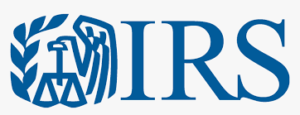How To Prepare For 2022 Taxes – December 1, 2021

There are steps people, including those who received stimulus payments or advance child tax credit payments, can take now to make sure their tax filing experience goes smoothly in 2022. They can start by visiting the Get Ready page on IRS.gov. Here are some other things they should do to prepare to file their tax return.
Gather and organize tax records
Organized tax records make preparing a complete and accurate tax return easier. They help avoid errors that lead to processing delays that slow refunds. Having all needed documents on hand before taxpayers prepare their return helps them file it completely and accurately. This includes:
- Forms W-2 from employers
- Forms 1099 from banks, issuing agencies and other payers including unemployment compensation, dividends, distributions from a pension, annuity or retirement plan
- Form 1099-K, 1099-MISC, W-2 or other income statement for workers in the gig economy
- Form 1099-INT for interest received
- Other income documents and records of virtual currency transactions
Taxpayers should also gather any documents from these types of earnings. People should keep copies of tax returns and all supporting documents for at least three years.
Income documents can help taxpayers determine if they’re eligible for deductions or credits. People who need to reconcile their advance payments of the child tax credit and premium tax credit will need their related 2021 information. Those who did not receive their full third Economic Impact Payments will need their third payment amounts to figure and claim the 2021 recovery rebate credit.
Taxpayers should also keep end of year documents including:
- Letter 6419, 2021 Total Advance Child Tax Credit Payments, to reconcile advance child tax credit payments
- Letter 6475, Your 2021 Economic Impact Payment, to determine eligibility to claim the recovery rebate credit
- Form 1095-A, Health Insurance Marketplace Statement, to reconcile advance premium tax credits for Marketplace coverage
Confirm mailing and email addresses and report name changes
To make sure forms make it to the them on time, taxpayers should confirm now that each employer, bank and other payer has their current mailing address or email address. People can report address changes by completing Form 8822, Change of Address and sending it to the IRS. Taxpayers should also notify the postal service to forward their mail by going online at USPS.com or their local post office. They should also notify the Social Security Administration of a legal name change.
View account information online
Individuals who have not set up an Online Account yet should do so soon. People who have already set up an Online Account should make sure they can still log in successfully. Taxpayers can use Online Account to securely access the latest available information about their federal tax account.
Review proper tax withholding and make adjustments if needed
Taxpayers may want to consider adjusting their withholding if they owed taxes or received a large refund in 2021. Changing withholding can help avoid a tax bill or let individuals keep more money each payday. Life changes – getting married or divorced, welcoming a child or taking on a second job – may also be reasons to change withholding. Taxpayers might think about completing a new Form W-4, Employee’s Withholding Certificate, each year and when personal or financial situations change.
People also need to consider estimated tax payments. Individuals who receive a substantial amount of non-wage income like self-employment income, investment income, taxable Social Security benefits and in some instances, pension and annuity income should make quarterly estimated tax payments. The last payment for 2021 is due on Jan. 18, 2022.
Visit our Homepage to explore everything ATS can do for you.


